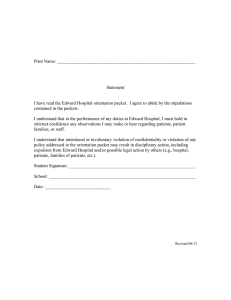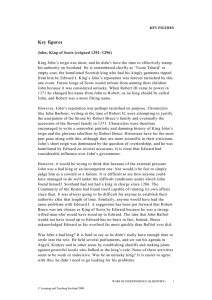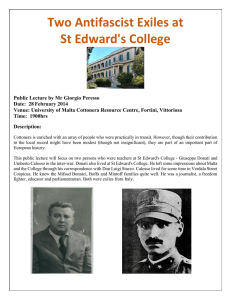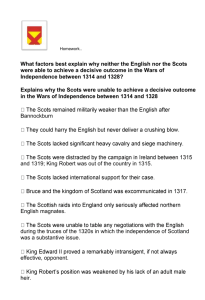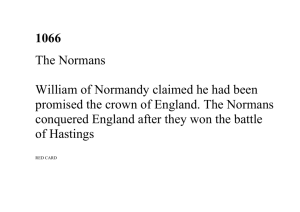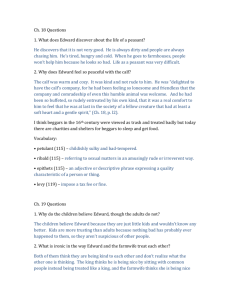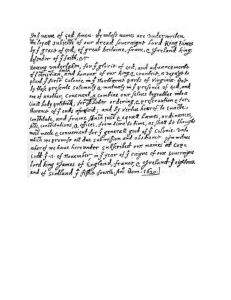Key figures
advertisement
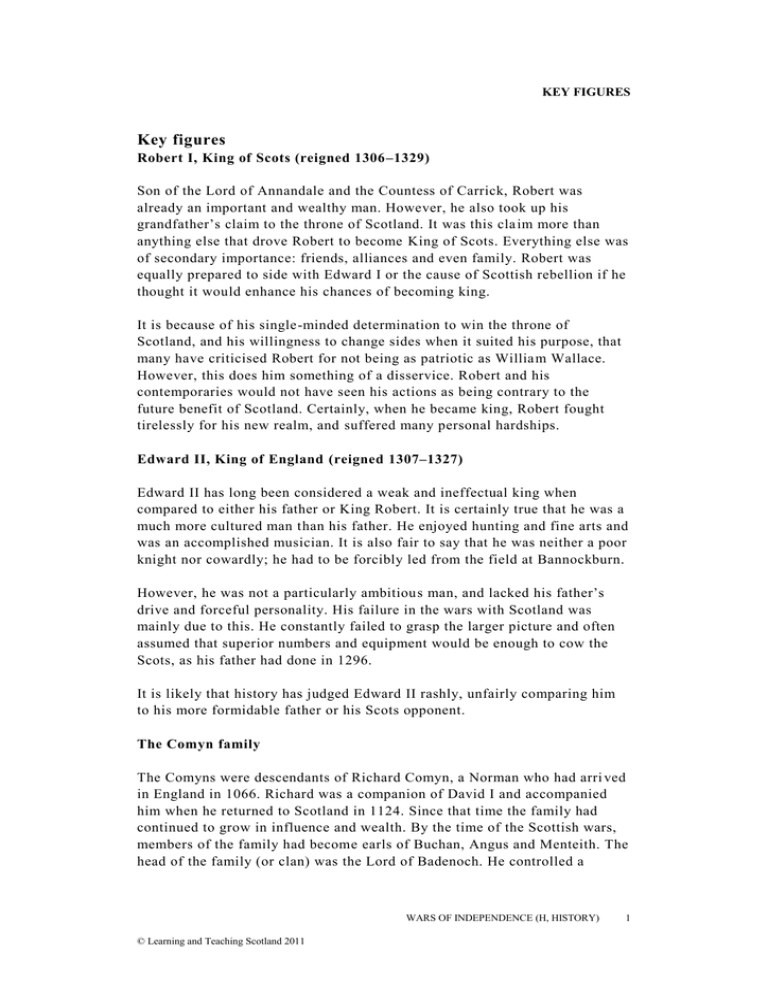
KEY FIGURES Key figures Robert I, King of Scots (reigned 1306–1329) Son of the Lord of Annandale and the Countess of Carrick, Robert was already an important and wealthy man. However, he also took up his grandfather’s claim to the throne of Scotland. It was this cla im more than anything else that drove Robert to become King of Scots. Everything else was of secondary importance: friends, alliances and even family. Robert was equally prepared to side with Edward I or the cause of Scottish rebellion if he thought it would enhance his chances of becoming king. It is because of his single-minded determination to win the throne of Scotland, and his willingness to change sides when it suited his purpose, that many have criticised Robert for not being as patriotic as William Wallace. However, this does him something of a disservice. Robert and his contemporaries would not have seen his actions as being contrary to the future benefit of Scotland. Certainly, when he became king, Robert fought tirelessly for his new realm, and suffered many personal hardships. Edward II, King of England (reigned 1307–1327) Edward II has long been considered a weak and ineffectual king when compared to either his father or King Robert. It is certainly true that he was a much more cultured man than his father. He enjoyed hunting and fine arts and was an accomplished musician. It is also fair to say that he was neither a poor knight nor cowardly; he had to be forcibly led from the field at Bannockburn. However, he was not a particularly ambitious man, and lacked his father’s drive and forceful personality. His failure in the wars with Scotland was mainly due to this. He constantly failed to grasp the larger picture and often assumed that superior numbers and equipment would be enough to cow the Scots, as his father had done in 1296. It is likely that history has judged Edward II rashly, unfairly comparing him to his more formidable father or his Scots opponent. The Comyn family The Comyns were descendants of Richard Comyn, a Norman who had arri ved in England in 1066. Richard was a companion of David I and accompanied him when he returned to Scotland in 1124. Since that time the family had continued to grow in influence and wealth. By the time of the Scottish wars, members of the family had become earls of Buchan, Angus and Menteith. The head of the family (or clan) was the Lord of Badenoch. He controlled a WARS OF INDEPENDENCE (H, HISTORY) © Learning and Teaching Scotland 2011 1 KEY FIGURES vast amount of land in the north and rivaled the king in both power and prestige north of the Tay. The family fought for a Balliol restorati on until it was apparent that King John did not want to return. James Douglas, ‘Good Sir James’ James was the son of Sir William Douglas, a supporter of William Wallace. His father died in the Tower of London for his support of the Scots cause, but that did not dissuade the younger Douglas from joining the cause of Robert Bruce. James’s land had been taken from him by Edward I and he was therefore a penniless knight. His only option of advancement was to join the Bruce cause and this he did with a great deal of enthusiasm, joining him at his inauguration in 1306. James quickly gained a reputation as a loyal follower and an able commander. He stuck with King Robert after his early defeats and was instrumental in the capture of his family’s home, Douglas castle. He fought alongside the king at Bannockburn and became one of his army’s chief lieutenants in the years that followed. After his death, James carried King Robert’s heart in a box to Spain in order to complete the Scottish king’s wish to go on a cru sade. Edward Bruce Edward Bruce was one of five brothers: Robert, Edward, Niall, Alexander and Thomas. The eldest was Robert who went on to become King of Scots. Niall and Alexander were captured and executed by Edward I following Robert’s inauguration in 1306. Thomas was killed in battle. Edward Bruce became his brother’s most loyal commander. He stuck with Robert during the early defeats and ably led several attacks on castles in the south west of the country. He commanded one of the schiltro ns at the Battle of Bannockburn and fought bravely next to the common pike men, helping his brother achieve his most famous victory. In 1315, Robert dispatched Edward to Ireland with a Scots army to open up a second front against Edward II. Once there, Edward had himself declared High King of Ireland. Unfortunately his bid was unsuccessful and he died in 1318 at the Battle of Faughart, which saw the Scottish/Irish cause destroyed. 2 WARS OF INDEPENDENCE (H, HISTORY) © Learning and Teaching Scotland 2011 KEY FIGURES Isabella and Mortimer (reigned as Guardians 1327–1330) Queen Isabella and Lord Roger Mortimer successfully overthrew Edward II in 1327 and they jointly became regents for her young son, the newly crowned Edward III. Isabella, daughter of the King of France, had married Edward II in 1307. The marriage was not a happy one. Despite bearing E dward II several sons, it was well known that he had little time for her, and was allegedly more interested in his male companions, such as Piers Gaveston. When Edward II sent Isabella to France in 1325 to act as an ambassador to her father’s court she met Roger Mortimer, an English lord who had been banished after a failed baronial rebellion. Isabella and Mortimer both hated the king’s favourite, Hugh Despenser, and soon began to plot a new rebellion against her husband. It was at this time that the two b ecame lovers. The two organised an invasion of England, but they had few followers initially. Edward II, however, found that his support had withered away and was unable to gather much of an army himself. The king eventually was forced to surrender and abdicate in favour of his son, Edward III. In 1330, when Edward III assumed his own private rule he had Roger Mortimer put to death, and his mother was forced to retire from public life. WARS OF INDEPENDENCE (H, HISTORY) © Learning and Teaching Scotland 2011 3

